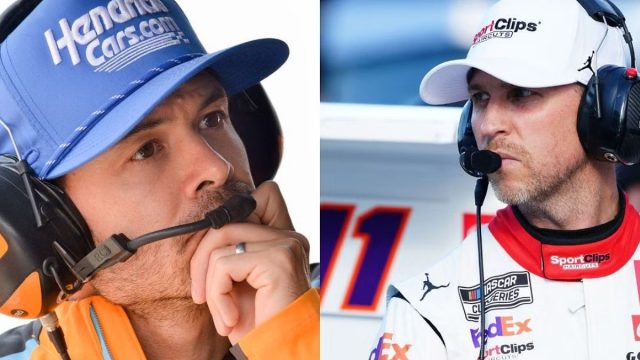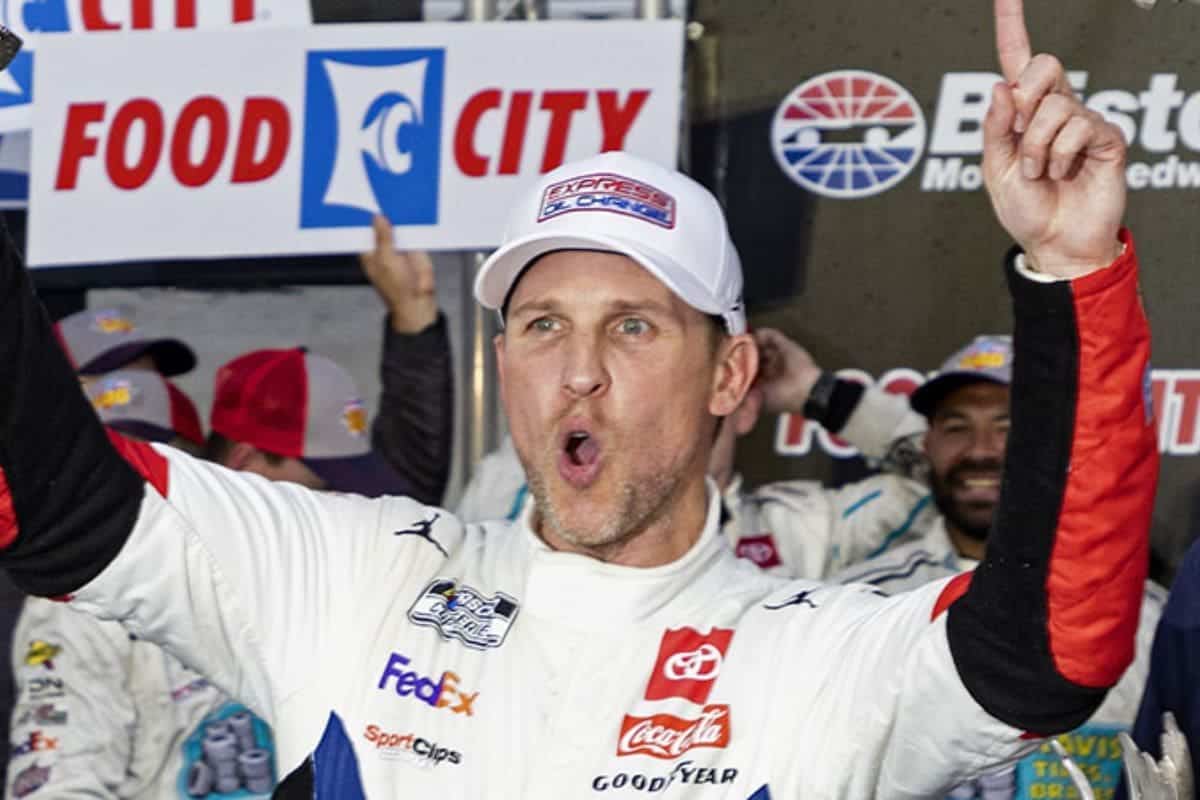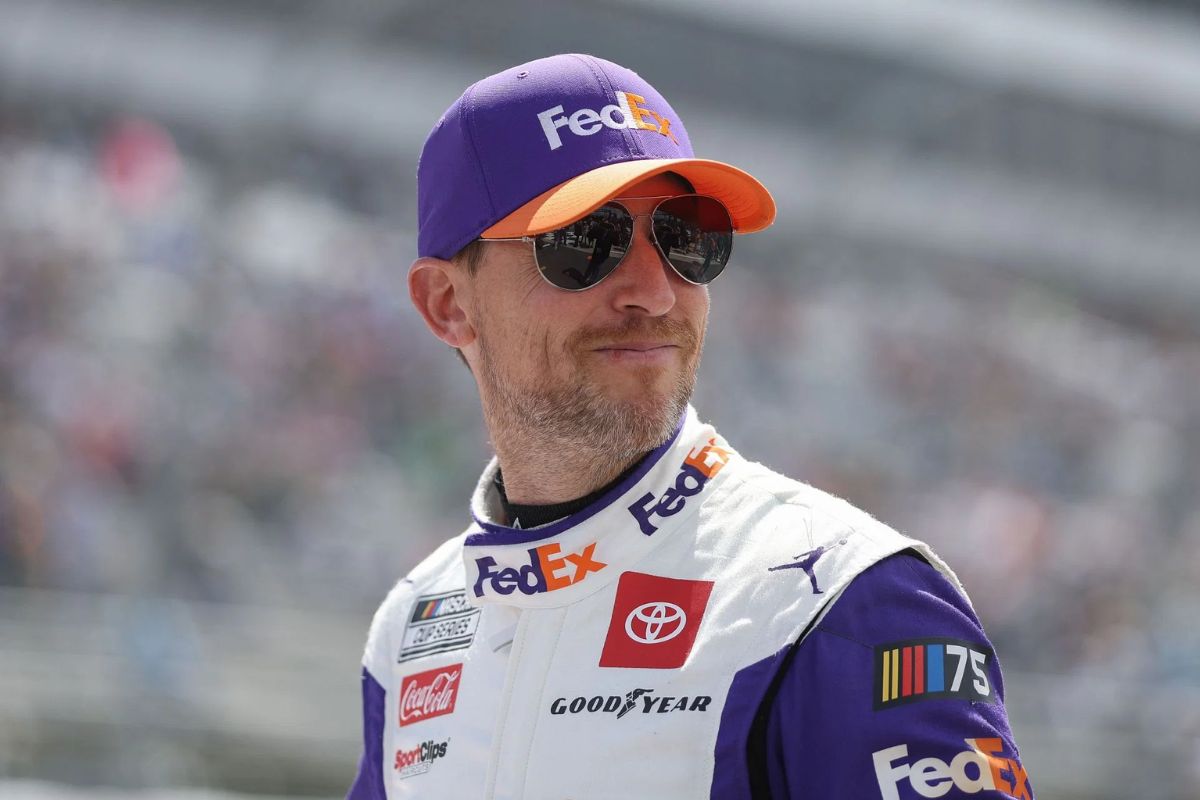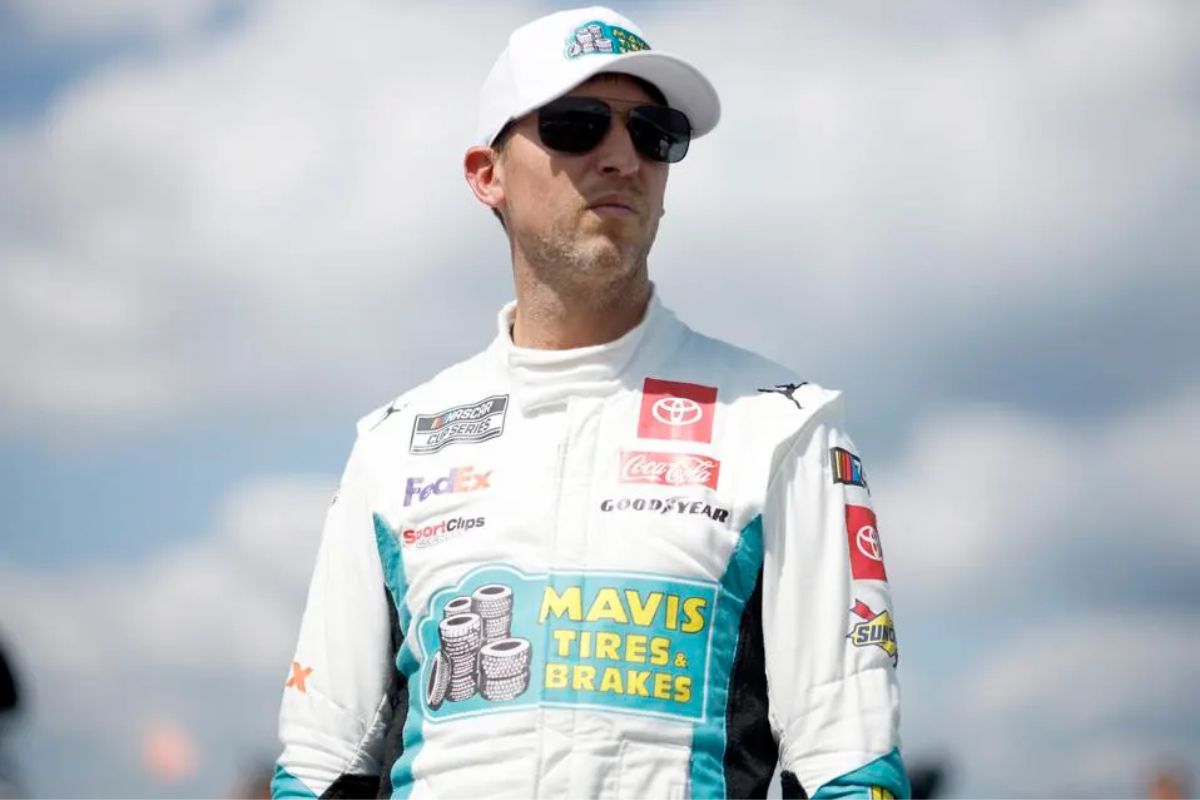Denny Hamlin Uses Aero as a Weapon : In a remarkable display of tactical prowess at Dover’s Monster Mile, Denny Hamlin’s recent victory highlighted the dynamic interplay of skill and strategy in NASCAR. By skillfully adopting Kyle Larson’s side-drafting technique—a tactic designed to disturb the airflow around competing vehicles, thereby impeding their speed—Hamlin not only showcased his racing versatility but also sparked a broader conversation about the evolving strategies in motorsports.
Key Takeaways
- Denny Hamlin adopted Kyle Larson’s aggressive high-line driving technique at Dover’s Monster Mile.
- This strategy allowed Hamlin to maximize speed and minimize tire wear.
- Hamlin’s adaptation of Larson’s approach demonstrated his versatility and deep understanding of track dynamics.
- The high-line technique provided Hamlin an aerodynamic edge, crucial for overtaking and defending positions.
- By using Larson’s method, Hamlin effectively managed airflow and reduced drag, enhancing his car’s performance.
Denny Hamlin’s Victory at Dover
In a remarkable turn of events at Dover, Denny Hamlin secured his third victory of the 2024 NASCAR Cup Series, matching the season’s win tally of his teammate William Byron. This win not only highlighted Hamlin’s driving skills but also emphasized the intense competition within the Hendrick Motorsports team. Throughout the race, Hamlin demonstrated a sharp understanding of the track, known for its high-speeds and unique concrete surface, which requires both aggression and precision from drivers.
Initially, it seemed that Kyle Larson, driving the #5 car, might secure the race, leading confidently until the end of Stage 2. However, the dynamics shifted dramatically in the final stages. Here, Hamlin’s experience and strategic insight came to the forefront, maneuvering through the pack and seizing pivotal moments to advance. The implications of this win are significant, positioning Hamlin as a strong contender for the championship. It also heightens the rivalry within Hendrick Motorsports, establishing a competitive precedent for the remainder of the season.
Denny Hamlin’s Aero Advantage and Race Strategy
Denny Hamlin’s mastery of the Next Gen car’s aerodynamic capabilities played a pivotal role in his strategic victory at Dover. Throughout the race, while many competitors struggled with overtaking, Hamlin demonstrated a skillful understanding of how to optimize his vehicle’s performance within the unique constraints of the Monster Mile. His adept use of the Next Gen car’s aero advantages not only allowed him to maintain critical positioning but also to execute passes with surgical precision when opportunities arose.
The race at Dover, notorious for its singular challenges due to the high-banked, one-mile oval, emphasizes aerodynamic efficiency and tire management. Hamlin, capitalizing on his team’s preparations and insights into the Next Gen car’s behavior under different track conditions, adapted his driving style to minimize aerodynamic drag and enhance downforce. This strategy was evident in his ability to stay close enough to the race leaders, exploiting the brief windows when their cars were adversely affected by turbulent air or tire wear.
Moreover, Hamlin’s race strategy was intricately linked to his pit stop execution. By timing his stops with favorable race conditions and tire wear, he consistently regained advantageous positions. This not only preserved the car’s mechanical integrity but also positioned him favorably against competitors who were less successful in managing the complex interplay of aerodynamics and tire degradation.
Jeff Gluck’s Analysis on Aero Advantage
Jeff Gluck provides a detailed analysis of Hamlin’s utilization of aerodynamic strategies, which he argues played a decisive role in his recent victories. Gluck carefully dissects the race at Las Vegas, where Hamlin’s command over the new car’s aerodynamics was evident. By leveraging the advancements made in the vehicle’s design, Hamlin was not only able to capture the lead but maintain it with a skill that left his competitors trailing. This, Gluck suggests, was not merely a case of superior driving but an ‘aero masterclass’.
“So, Denny Hamlin is leading. Kyle Larson thinks, ‘You know what? I can track him down. I think I have time to do it.’ And indeed, he does track Denny Hamlin down for the lead then Denny obviously knows, ‘Okay well I’m gonna do what every driver is doing these days in any sort of sizable track at all.’ And that is to try to take his air away and or shut his air off, as Kyle Larson put it after the race.” -Gluck
According to Gluck, Hamlin’s approach revolved around optimizing the airflow around his car, a technique that significantly reduced drag and increased his speed on critical stretches of the track. This manipulation of aerodynamic forces, often referred to as ‘side-drafting’, allowed Hamlin to effectively disrupt the air flow to his competitors’ vehicles, making it harder for them to maintain speed and control. Gluck describes this as a tactical move, one that harnesses the very essence of the latest technological advancements in NASCAR’s next-generation vehicles.
“By the way, this is not Larson complaining… He was citing his own success in using these techniques when talking about this. So like (Larson’s) talking about: ‘Hey at Vegas when I won I just took Reddick’s air away and I won that race and then he said you know, the stage (2) that I won earlier today, I just kind of backed everybody up to me. I could see where Bowman was going and I just made sure he stayed behind me and took his air away. And it’s a technique that everybody uses now right?”-Gluck
NASCAR’s Future and Next Gen Car Challenges
As NASCAR moves into the era of the Next Gen car, the sport faces significant challenges. These include a shift towards single-file racing and concerns over the vehicle’s performance as a defensive rather than offensive tool. This evolution raises questions about the strategic subtleties of racing and the spectacle it offers to fans.
The observations from drivers like Denny Hamlin and Kyle Busch reveal an underlying issue: the Next Gen car may inadvertently promote a more critical, less aggressive racing style. This is due in part to the aerodynamic characteristics of the vehicle, where the ability to ‘take someone’s air away’ becomes a decisive factor in maintaining position rather than overtaking.
“I asked Denny when did this start exactly. He said it was when the 550 package started on intermediate tracks. Drivers started to figure it out and it is obviously the tool.”
“You heard Kyle Busch say this weekend that this car is better as a defensive tool than an offensive tool… It was really interesting to me that you know Larson kept saying it’s easy. He used that word multiple times to take someone’s air away”
“So obviously Denny did that as anybody would right? The drivers to win races are good at air blocking they have to be.”- gluck
News in Brief: Denny Hamlin Uses Aero as a Weapon
Denny Hamlin’s victory at Dover exemplifies the critical role of strategic adaptation in NASCAR racing. By mastering the side-drafting technique, Hamlin not only improved his aerodynamic efficiency but also strategically impeded his competitors’ speed. This approach underlines the significance of continuous skill development and adaptation among top racing professionals. Additionally, it highlights the evolving challenges and tactical intricacies within the Next Gen car era, demanding ever more sophisticated strategies from drivers and teams.
Our Reader’s Queries
Q. What happened between Larson and Hamlin?
A. At Dover Motor Speedway on Sunday, Denny Hamlin skillfully navigated past lapped traffic, maintaining his lead over Kyle Larson in a thrilling showdown between two of NASCAR’s top-tier drivers. With precision and determination, Hamlin held off Larson’s attempts to overtake him in the final laps, ultimately securing victory in the Cup race by a margin of approximately a quarter of a second.
Q. Has Denny Hamlin ever won a championship?
A. At 43 years old, Denny Hamlin finds himself in esteemed company alongside Junior Johnson as the only drivers in the 50-win Cup Club without a championship to their names. This team certainly possesses all the ingredients for a championship season,” remarked Hamlin’s crew chief, Chris Gabehart, confidently.
Q. What did Hamlin say about Larson?
A. Denny Hamlin deftly maneuvered through lapped traffic, maintaining his lead over Kyle Larson in a high-stakes battle between two of NASCAR’s top-tier drivers. Securing victory in the Cup race by a margin of about a quarter of a second at Dover Motor Speedway on Sunday, Hamlin remarked, “If you’re going to speak up, you better back it up with a win, no doubt.”
ALSO READ: Denny Hamlin’s Beliefs Challenged by Michael Jordan’s Influence



